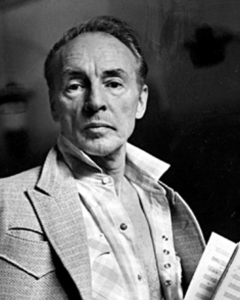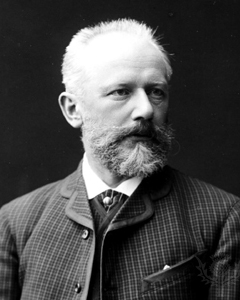IN THE UPPER ROOM
April 26-28 & May 3-5, 2024 at Peter Martin Wege Theatre
Experience “one of the greatest ballets of all time” (New York Times, October 2022) right here in Grand Rapids in our Peter Martin Wege Theatre as Grand Rapids Ballet presents In The Upper Room by renowned choreographer Twyla Tharp. Be captivated as our dancers push themselves to the edge of physical limits, propelled by the driving Philip Glass score. As the work is performed in both sneakers and pointe shoes, the choreography draws on elements of classical ballet, jazz, tap dance, yoga, and boxing to create a one-of-a-kind theatrical experience. This program also features the return of Serenade, Balanchine’s memorable 1934 neo-classic masterpiece, featuring sweeping choreography, exquisite stage patterns, and iconic long tulle dresses, all paired with a lush score by Tchaikovsky. Two of ballet’s most celebrated works in one unforgettable program makes this a performance you do not want to miss!
IN THE UPPER ROOM | DATES & TIMES
Friday, April 26, 2024
- Evening performance at 7:30 p.m. | Get Tickets
Saturday, April 27, 2024
- FREE Family Matinee performance at 2:00 p.m. – Featuring an introduction to the world of professional ballet and an excerpt of the In The Upper Room program, this family focused production will last about 45-60 minutes. In this performance, Grand Rapids Ballet is only performing the second work in this production, the beloved Serenade. | Get Tickets
- Evening performance at 7:30 p.m. | Get Tickets
Sunday, April 28, 2024
- Matinee performance at 2 p.m. | Get Tickets
Friday, May 3, 2024
- Evening performance at 7:30 p.m. | Get Tickets
Saturday, May 4, 2024
- Evening performance at 7:30 p.m. | Get Tickets
Sunday, May 5, 2024
- Matinee performance at 2 p.m. | Get Tickets
IN THE UPPER ROOM | CREATORS

Twyla Tharp
Biography
Since graduating from Barnard College in 1963, Ms. Tharp has choreographed more than one hundred sixty works: one hundred twenty-nine dances, twelve television specials, six Hollywood movies, four full-length ballets, four Broadway shows and two figure skating routines. She received one Tony Award, two Emmy Awards, nineteen honorary doctorates, the Vietnam Veterans of America President’s Award, the 2004 National Medal of the Arts, the 2008 Jerome Robbins Prize, and a 2008 Kennedy Center Honor. Her many grants include the John D. and Catherine T. MacArthur Fellowship. She is a member of the American Academy of Arts and Sciences, the American Philosophical Society, and an Honorary Member of the American Academy of Arts and Letters.
In 1965, Ms. Tharp founded her dance company, Twyla Tharp Dance. Her dances are known for creativity, wit and technical precision coupled with a streetwise nonchalance. By combining different forms of movement – such as jazz, ballet, boxing and inventions of her own making – Ms. Tharp’s work expands the boundaries of ballet and modern dance.
In addition to choreographing for her own company, she has created dances for The Joffrey Ballet, American Ballet Theatre, The Paris Opera Ballet, The Royal Ballet, New York City Ballet, The Boston Ballet, The Australian Ballet, Hubbard Street Dance Chicago, The Martha Graham Dance Company, Miami City Ballet, Pacific Northwest Ballet, Atlanta Ballet and Royal Winnipeg Ballet. Today, ballet and dance companies around the world continue to perform Ms. Tharp’s works.
Ms. Tharp’s work first appeared on Broadway in 1980 with WHEN WE WERE VERY YOUNG, followed by her collaboration with musician David Byrne on THE CATHERINE WHEEL and later by SINGIN’ IN THE RAIN. In 2002, Ms. Tharp’s dance musical MOVIN’ OUT, set to the music and lyrics of Billy Joel. Ms. Tharp later worked with Bob Dylan’s music and lyrics in THE TIMES THEY ARE A-CHANGIN’ and COME FLY AWAY, set to songs sung by Frank Sinatra.
In film, Ms. Tharp has collaborated with director Milos Forman on HAIR, RAGTIME and AMADEUS. She has also worked with Taylor Hackford on WHITE NIGHTS and James Brooks on I’LL DO ANYTHING.
Her television credits include choreographing SUE’S LEG for the inaugural episode of PBS’ DANCE IN AMERICA IN 1976, co-producing and directing MAKING TELEVISION DANCE, and directing THE CATHERINE WHEEL for BBC Television. Ms. Tharp co-directed the television special BARYSHNIKOV BY THARP.
In 1992, Ms. Tharp published her autobiography PUSH COMES TO SHOVE. She went on to write THE CREATIVE HABIT: Learn it and Use it for Life, followed by THE COLLABORATIVE HABIT: Life Lessons for Working Together. In 2019, her fourth book was published, KEEP IT MOVING: LESSONS FOR THE REST OF YOUR LIFE.
Today, Ms. Tharp continues to create.

George Balanchine
Biography
Born in St. Petersburg, Russia, George Balanchine (1904-1983) is regarded as the foremost contemporary choreographer in the world of ballet. He came to the United States in late 1933, at the age of 29, accepting the invitation of the young American arts patron Lincoln Kirstein (1907-1996), whose great passions included the dream of creating a ballet company in America. At Balanchine’s behest, the School of American Ballet was founded in 1934, the first product of the Balanchine-Kirstein collaboration. Several ballet companies directed by the two were created and dissolved in the years that followed, while Balanchine found other outlets for his choreography. Eventually, with a performance on October 11, 1948, New York City Ballet was born. Balanchine served as its ballet master and principal choreographer from 1948 until his death in 1983.
Balanchine’s more than 400 dance works include Serenade (1934), Conce
A major artistic figure of the twentieth century, Balanchine revolutionized the look of classical ballet. Taking classicism as his base, he heightened, quickened, expanded, streamlined, and even inverted the fundamentals of the 400-year-old language of academic dance. This had an inestimable influence on the growth of dance in America. Although at first his style seemed particularly suited to the energy and speed of American dancers, especially those he trained, his ballets are now performed by all the major classical ballet companies throughout the world.

Philip Glass
Biography
Through his operas, his symphonies, his compositions for his own ensemble, and his wide-ranging collaborations with artists ranging from Twyla Tharp to Allen Ginsberg, Leonard Cohen to David Bowie, Philip Glass has had an extraordinary and unprecedented impact upon the musical and intellectual life of his times.
The operas – “Einstein on the Beach,” “Satyagraha,” “Akhnaten,” and “The Voyage,” among many others – play throughout the world’s leading houses, and rarely to an empty seat. Glass has written music for experimental theater and for Academy Award-winning motion pictures such as “The Hours” and Martin Scorsese’s “Kundun,” while “Koyaanisqatsi,” his initial filmic landscape with Godfrey Reggio and the Philip Glass Ensemble, may be the most radical and influential mating of sound and vision since “Fantasia.” His associations, personal and professional, with leading rock, pop and world music artists date back to the 1960s, including the beginning of his collaborative relationship with artist Robert Wilson. Indeed, Glass is the first composer to win a wide, multi-generational audience in the opera house, the concert hall, the dance world, in film and in popular music – simultaneously.
He was born in 1937 and grew up in Baltimore. He studied at the University of Chicago, the Juilliard School and in Aspen with Darius Milhaud. Finding himself dissatisfied with much of what then passed for modern music, he moved to Europe, where he studied with the legendary pedagogue Nadia Boulanger (who also taught Aaron Copland , Virgil Thomson and Quincy Jones) and worked closely with the sitar virtuoso and composer Ravi Shankar. He returned to New York in 1967 and formed the Philip Glass Ensemble – seven musicians playing keyboards and a variety of woodwinds, amplified and fed through a mixer.
The new musical style that Glass was evolving was eventually dubbed “minimalism.” Glass himself never liked the term and preferred to speak of himself as a composer of “music with repetitive structures.” Much of his early work was based on the extended reiteration of brief, elegant melodic fragments that wove in and out of an aural tapestry. Or, to put it another way, it immersed a listener in a sort of sonic weather that twists, turns, surrounds, develops.
There has been nothing “minimalist” about his output. Glass has composed more than twenty five operas, large and small; fourteen symphonies, thirteen concertos; soundtracks to films ranging from new scores for the stylized classics of Jean Cocteau to Errol Morris’s documentary about former defense secretary Robert McNamara; nine string quartets; a growing body of work for solo piano and organ. He has collaborated with Paul Simon, Linda Ronstadt, Yo-Yo Ma, and Doris Lessing, among many others.

Peter Tchaikovsky
Biography
Peter (Pyotr) Ilyich Tchaikovsky (1840-1893) was a Russian composer whose works included symphonies, concertos, operas, ballets, and chamber music. Tchaikovsky was born on May 7th, 1840 in Votkinsk, a small town in the Russian Empire. He displayed exceptional musical ability from an early age, improvising at the piano and composing his first song in 1844, aged four. Tchaikovsky persuaded his father that music was his future and he began composition lessons with Anton Rubinstein in 1861. Between 1871 and 1876 he produced a series of great works, including Swan Lake (1876) and the First Piano Concerto (1875), which established him as Russia’s leading composer. By 1887, he was conducting his own music to great acclaim and producing such works as the Sixth Symphony, the ‘Pathetique’ in 1893 (the year of his death), and the ballets The Sleeping Beauty (1890) and The Nutcracker (1892).

Norma Kamali
Biography
NORMA KAMALI is an iconic designer marking 55 years in business. She owns her own business and continues to remain relevant in the fashion industry while living a creative life and running her global company. Norma is credited with fashion inventions that have impacted and influenced fashion globally throughout the decades.
She invented many firsts in fashion: the sleeping bag coat, sweats as ready to wear which inspired casual dressing as a global lifestyle, inventive active sportswear, influential swimwear that inspired many swimwear companies for decades, wash and wear easy care, and jersey knit collections for a modern lifestyle for packable travel friendly wardrobes.
She designed luxury collections in Italy and a fashion wardrobe for Walmart while managing her global business based in New York City. She collaborated in numerous licensing agreements for all categories in the USA, Japan and Europe throughout her career. No matter the design, the objective for her brand is designing clothing that is timeless, sustainable (wash only), and inspires the wearer to feel good.
Norma’s fascination for technology has been used throughout her career, from the early days in 1964 as a reservations agent at Northwest Airlines trained on a UNIVAC computer. Her early realization of the opportunities of access to real time data inspired many forays into the digital world in her business.
Her website, created in 1996, was the first step for her to have real time connections directly to her clients. “Try before you buy” and “shop like a celebrity” were instituted at this time as well. QR codes were used for shopping in store from mannequin installations, eventually giving clients the chance to see the clothing in person and then save the QR code photo for future purchasing upon arrival at home.
Her headquarters, established on 56th Street in a building she purchased in 1982, created a full concept design company, from the sample room to three floors of retail. As of July 2022 her new headquarters are in the West Village, with 17,000 sq ft for the company office and sample room, as well as installations and events.
Her current collections are designer styling at contemporary price points. The distribution is primarily e-commerce accounts globally and distribution agreements in Europe, Canada, and Australia. Her retail store was replaced by a 24/7 website, with same day service in the New York City metropolitan area for tourists. Norma believes fashion and beauty are enhanced by a healthy, fit body and mind. Her book released in 2021 outlines her research and studies into healthy lifestyle, wellness, and longevity.
When her close friends were dying of aids in the 80’s, her desire was to deal with her grief by understanding the importance of the immune system. She studied under Dr. Andrew Weil, who held retreats for doctors wanting to incorporate proactive health methods into their practice.
“While some of the chemistry went over my head, I was a passionate student and enjoyed meeting the incredible folks who spoke at and were a part of the retreats, like Michael Pollan and Dr. Low Dog, a Native American medicine woman.”
“I had the extraordinary experience of being mentored by Horst, the creator of Aveda, when after the sale of the company he decided to do extraordinary research in the health of women and the interaction of make up, skin, hair, all products and women’s health. He had me read the studies and as I was reading I stopped wearing my red nails and red lips that defined my style for so many years.”
“’I Am Invincible’ is the name of my book and the start of the conversation about aging with power. I explore the decades of a woman’s life and the experiences; however at menopause and the age of 50 a new opportunity for the rest of your life opens and the best experience is a conscious path to longevity and a positive mind.
“My interest in all things for female empowerment has been my purpose in my life. There is nothing more important than feeling good in your body and mind, and when you look good at the same time a woman is invincible.”
“I am fully immersed in this research and exploration personally and my goal at 77 years of age is to share this with women not just post menopause, but women pre menopause so that the choice they make heads them to longevity. Aging with power will enable new dreams, opportunities never considered before for post 50 year olds.
“My experience of meeting my soul mate at 65 is just one example! And I just signed a long term lease.
“More to follow as my dream comes to life!”
-Norma Kamali
To read Kamali’s full bio, visit her website: The Norma Kamali Bio Chron





